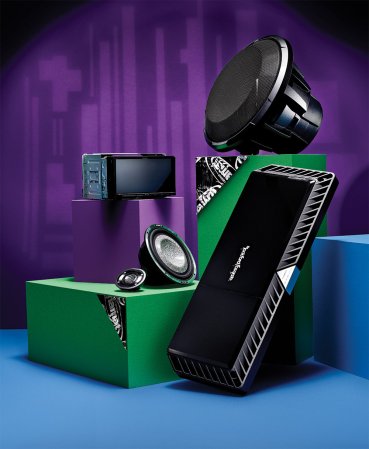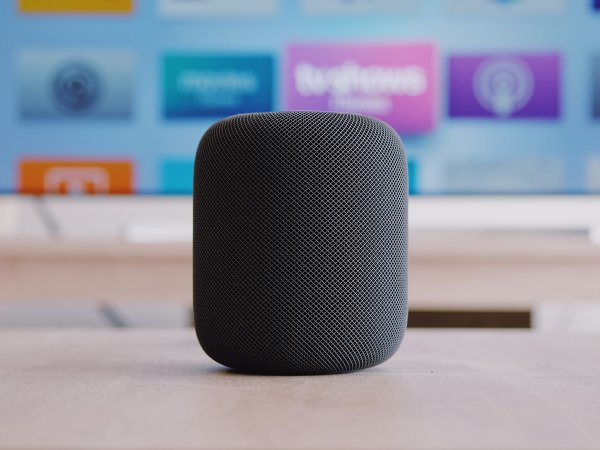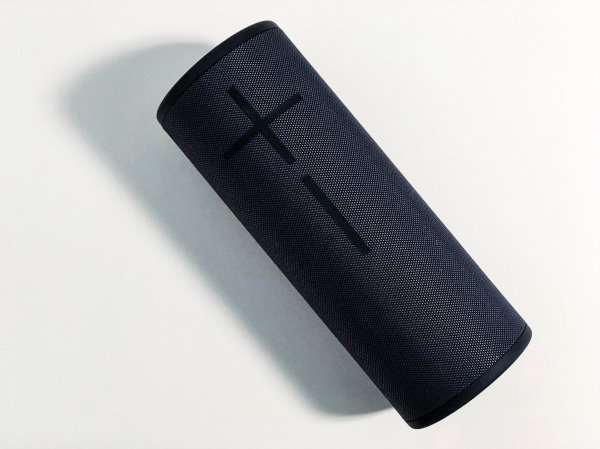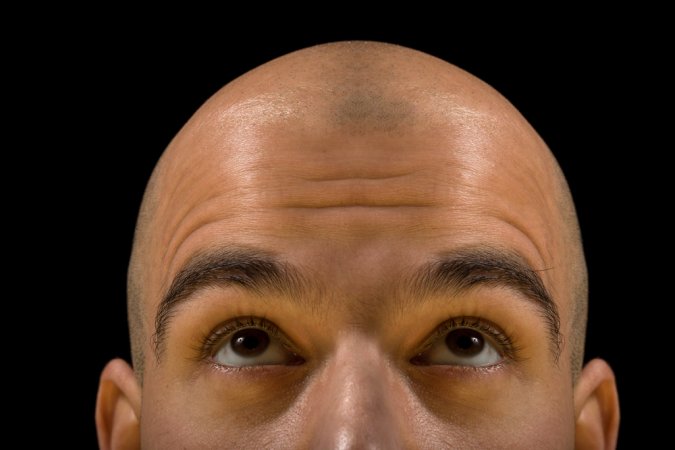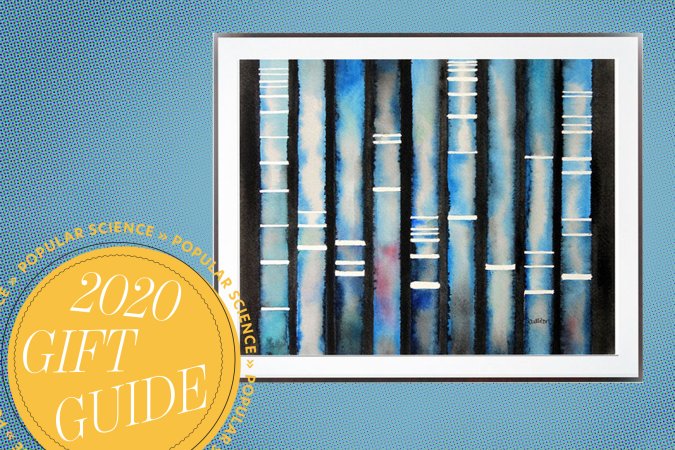

We may earn revenue from the products available on this page and participate in affiliate programs. Learn more ›
The new Neat Microphones King Bee II is an affordable entry-level condenser mic that aims to fill the role of an all-purpose studio recording tool for singers, musicians, and podcasters. The King Bee II tones down the look of the original King Bee microphone—with its cartoonish yellow grill and stripes—while retaining the same natural, balanced, and versatile frequency response for which its predecessor is known. Assessed on how it performs on a variety of vocal and instrumental sources, the King Bee II matched or surpassed similarly priced competitors in sound quality and usability, even holding its own against competitors twice its price. Let’s take a closer look at what makes the refreshed King Bee worthy of consideration for beginners and established creators alike looking to build a collection of versatile studio gear.
Neat King Bee II
The Neat King Bee II’s design
At first glance, the Neat King Bee II looks more or less like any average studio condenser microphone in its price range, with a subdued black metal chassis and simple logo that mark a departure from the loud design of the original King Bee. Upon removal from its packaging, what sets the King Bee II apart starts to become clear. For starters, it’s heavy, weighing in at nearly 2.5 pounds with its shockmount and pop filter. This gives the microphone a premium, durable feel that’s reminiscent of classic tube condenser designs, which tend to fetch much higher prices on account of their parts, design intricacy, and sound quality.
Adding to this weight is the King Bee II’s prominent headbasket, which houses a relatively large 34mm center-terminated condenser capsule. Capsules of this size are relatively rare in this price range; for reference, the similarly priced AKG P220 uses a 25.4mm capsule. This is notable because capsules with a larger diameter have a greater ability to accurately reproduce low-frequency information, and they can often withstand higher volumes or sound pressure levels due to requiring a greater thickness. Overall, the King Bee II’s above-average size and weight inspire confidence in its durability, but it’s definitely more unwieldy than most of its competitors in the sub-$200 category, a price range that tends to be dominated by relatively compact products.
The King Bee II comes out of the box already attached to its Beekeeper shockmount, which is built from a combination of molded plastic and rubber elastics. The mic itself is affixed to the shockmount via a screw ring at its base, which can be loosened by hand to facilitate separating the mic from the mount. The entire apparatus feels really sturdy, but due to the rigid, single-point nature of the mic-to-shockmount connection, the microphone tends to move along with the shockmount a bit more than feels proper. The considerable weight of the King Bee II may help to facilitate its resistance to external vibrations, but I found myself wondering how it would hold up once it was on the stand. It’s also worth noting that because the King Bee II doesn’t include a dedicated carrying case or bag, there shouldn’t really ever be a reason to separate it from its shockmount, which adds a bit of protective bulk. The microphone’s box and molded foam insert should also be saved for safe storage and transport, unless Neat is planning on introducing a storage box somewhere down the line, which a mic of this size feels like it deserves.
Because the Neat King Bee II is designed first and foremost for pro studio use, it features an industry-standard XLR connector, which allows it to connect to recording consoles, microphone preamps, and other external pro audio interfaces. Its classic side-address design and condenser capsule feature a standard cardioid polar pattern that accepts sound from a single direction while working to reject sound from the opposite side, making it ideal for single-source recording applications.
The microphone’s integrated pop filter has a flat honeycomb-textured surface that visually communicates which side of the mic to use, contrasted by a scooped grill design on the inactive rear side. Like other studio mics in its category, the King Bee II lacks any support for USB connectivity and requires users to provide their own 48-volt phantom power, microphone preamp, and dedicated recording interface. Users who absolutely need USB connectivity for the sake of convenience or portability may want to check out the Neat Bumblebee II, which has a very similar frequency response profile and boasts a natural sound that’s uncommon for USB mics (check out our complete thoughts on that model and, if you’re sure which one is right for your project, read our guide to testing microphones).

Getting started
Because the Neat King Bee II comes conveniently attached to its pop filter and shockmount, setting it up is as simple as finding a microphone stand that’s sturdy enough to hold it. I used a modified version of an Hola! mic stand combined with the boom arm from a Gator GFW-MIC-0822 to take advantage of its 2.5-pound counterweight, which was more than enough to balance the King Bee II. Once on the stand, the shockmount assembly proved to appear much more adequate than it did at first glance, and the microphone hardly bounced at all as I worked to reposition the stand. From there, I used an XLR cable to connect the microphone to a mic input on my Universal Audio Apollo 8p interface, enabled 48-volt phantom power for the Class A discrete electronics, and adjusted the preamp gain until the interface registered the sound of my light scratching on the pop filter. For my recording tests, I used a 2012 Mac mini running Logic Pro X for my digital audio workstation (DAW).
The King Bee II’s sound
I had high hopes that the King Bee II would live up to its promise of low noise and high sensitivity after reading its specs and seeing how well it was built. On top of that, Neat Microphones was founded in 2014 by Skipper Wise and Martins Saulespurens, the co-founders of Blue, so the company (now a subsidiary of Turtle Beach) has a serious pedigree in the mic sector. Well, the King Bee II deserves any buzz it generates.
According to its published frequency response data, the microphone’s sound consists of a gradual increase in sensitivity from 16 Hz until 50 Hz, at which point the microphone’s sensitivity remains incredibly flat and unaltered until about 3 kHz. Above this, the mic’s sensitivity increases gradually and delicately, culminating in a deliberately sculpted high-frequency bump that tapers off at 20 kHz. Theoretically, this frequency curve, combined with the microphone’s published sensitivity of 26.0 mV/Pa at 1 kHz and maximum SPL of 140 dB, should make for an incredibly versatile product that can handle just about any source under the sun.
To test how the King Bee II might actually perform in a real-life studio setting, I used it to record speech, singing, acoustic guitar, electric guitar amp, and drum set. On voice, the King Bee II’s extended low-end response was on full display, providing rich and detailed bass information. I found the midrange to be a bit muddy and obscure on my voice, but that’s fairly common when dealing with mics that are designed for flat, neutral performance over being heavily sculpted to fill a specific purpose. As for the high end, the King Bee II performed remarkably well, offering a lifelike airiness to the top frequencies without producing an excess of harshness or sibilance. I could see this mic being a new contender among the best podcast microphones or best mics for streaming in cases where USB connectivity isn’t required.
Disappointingly, the microphone’s built-in pop filter did very little to block plosives from traveling from my mouth to the microphone capsule. I am by no means an exemplary practitioner of proper vocal technique, but even the most lukewarm “p” and “b” sounds caused enough wind to make the mic overload and I had to supplement it with additional pop filtering by means of a Stedman Proscreen to get a usable up-close sound. This issue disappeared when speaking from about 1 foot off the microphone but, as expected, the mic also began picking up significantly more ambient noise at that distance.
The King Bee II performed admirably on both acoustic and electric guitar. Thanks to its extended low-frequency response, it reproduced a rich and detailed picture of low harmonic information from both instruments. I found its flat midrange to sound just as muddy on acoustic guitar as it did on vocals, but I was able to temper this effect with a bit of EQ in Logic. On electric guitar, however, the King Bee II was able to harness this midrange response to capture a great picture of the instrument’s girth and dynamic character without ever sounding thin. I found the mic less desirable on the high frequencies generated by the guitar amp, veering into harsh territory at moments, but I really enjoyed the King Bee II’s response when it picked up delicate string noise on acoustic guitar, especially when focused on the guitar neck. Sensitivity is a double-edged sword.
For my drum test, I first created a mono drum recording by placing the King Bee II directly above the kick drum pedal at a distance of roughly 4 feet. Overall, the sound captured by the microphone was very well-balanced, with ever-important low frequencies and midrange consistently represented and a sonic character reminiscent of the more expensive beyerdynamic M90 PRO X (another condenser well worth a look if you need immediacy and versatility). While I found that the King Bee II created a rather punchy and powerful overhead drum recording, its high-end response proved to be a bit too bold for my taste in the cymbal department. As a rule, I generally prefer to use “darker” sounding microphones to record cymbals, after which I can bump up the highs to taste using EQ, but I acknowledge that others may prefer a cymbal sound that’s chock full of high frequencies from the get-go. Finally, I moved the King Bee II to the kick drum facing the front of the kit, where the mic performed better, delivering a wealth of low-end and plenty of attack to produce a nearly mix-ready kick drum sound.

So, who should buy the Neat King Bee II?
Overall, the Neat King Bee II is an impressively natural-sounding large-diaphragm condenser microphone with a full, detailed low-end response that’s almost unheard of in its price range. It doesn’t have the meticulously sculpted sheen or scooped midrange of purpose-built broadcast microphones like the $299 beyerdynamic M70 PRO X (another mic that immediately impressed me), but it’s also not a one-trick pony. While it could be just a YouTube mic, a really good one at that, it’s built first and foremost for capturing accurate and neutral recordings, which ultimately translates to sheer versatility in the studio. Bear in mind that you’ll need to bring your own recording interface, microphone preamps, and post-production effects like EQ if you want to get the most out of the Neat King Bee II, but it’s well worth it when you consider its durability, sound quality, and overall price-to-performance ratio.
If you’re looking to maintain a smaller, more portable recording setup but still want access to the unique low-end response of the King Bee II, the Neat Bumblebee II is a worthy alternative that features USB connectivity and a similar larger-than-average condenser capsule. Across both of these models, Neat Microphones manages to deliver unconventionally accurate and flexible sound on a budget, and that’s no small feat.


